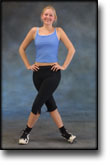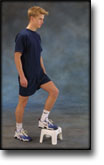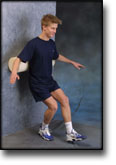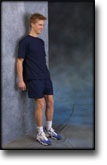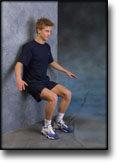|
Good results of fasciotomy in chronic compartment syndrome of the lower leg.
Verleisdonk EJ, van den Helder CJ, Hoogendoorn HA, van der Werken C. Ned Tijdschr Geneeskd 1996 Dec 14;140(50):2513-7.
OBJECTIVE.
To assess the results of fasciotomy in patients with a chronic compartmental syndrome.
DESIGN.
Retrospective study.
SETTING.
Department of Surgery, Central Military Hospital, Utrecht, the Netherlands.
METHOD.
Closed fasciotomy was performed in 81 patients (151 compartments) after standardized measurement of the pressure of the symptomatic compartment during exercise. The anterior compartment was affected 149 times and the lateral compartment twice. The pressure reading was repeated at least 3 months after the operation. All operated patients 6 months postoperatively were sent a written questionnaire inquiring about the results of the operation.
RESULTS.
Postoperative complications included a neurinoma (3 times) and a seroma (once). The mean postoperative intramuscular pressures were lower than the preoperative ones: the pressure at rest fell from 22.1 to 14.0 mm Hg (p < 0.05), the exercise pressure from 57.5 to 25.4 mm Hg (p < 0.01) and the relaxation pressure from 34.4 to 25.2 mm Hg (p < 0.05). Ten patients had an unchanged increased pressure after the operation, for which a second fasciotomy was performed 4 times. Attenuation of symptoms was reported by 59 patients (76%). Nine patients with poor results had already had a combination with some other hyperpressure injury before the operation.
CONCLUSION.
Closed fasciotomy in a demonstrated chronic compartmental syndrome in most cases gave good results, viz. attenuation of symptoms and a decrease of the intramuscular pressure, especially after exercise.
|







